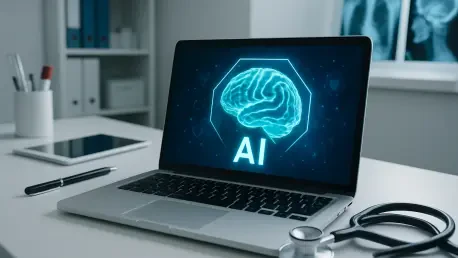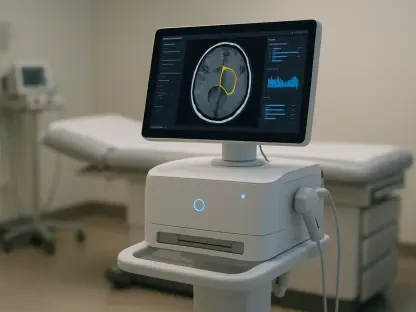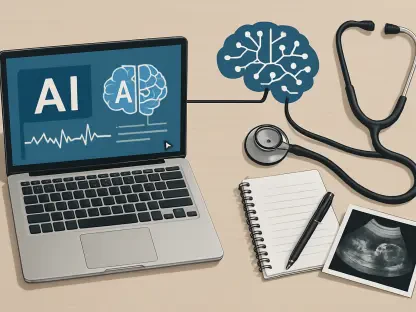The realm of medical artificial intelligence (AI) often sparks visions of futuristic algorithms crunching data in remote servers, promising to revolutionize healthcare overnight. However, the reality of crafting AI that can truly function in clinical settings is far more nuanced and grounded in practical challenges. For years, the development process was driven by tech companies that collected vast datasets, built complex models, and attempted to integrate them into healthcare workflows. This often resulted in “black box” systems that lacked transparency, failed to comply with regulations, and struggled with the intricacies of real-world patient data. Today, the focus has shifted from raw computing power to ensuring clinical accuracy and regulatory readiness. A key driver of this transformation is the involvement of practicing doctors, who are stepping into critical roles to define truth, guide design, validate outputs, and oversee the creation of AI solutions tailored for medical environments.
1. Doctors as Key Players in AI Development
The complexity of medical data presents a unique hurdle for AI systems, as it is often multimodal and deeply tied to specific contexts. A single phrase in a physician’s note, a faint anomaly in an MRI scan, or the timing of clinical events can drastically alter a diagnosis. Without expert input, algorithms frequently misinterpret these subtleties, leading to unreliable outcomes. Practicing doctors are now integral to the process, providing the precision needed by structuring datasets, confirming rare or ambiguous cases, and establishing what constitutes clinical “ground truth.” Their expertise ensures that AI doesn’t just identify patterns but aligns with the realities of patient care. This hands-on involvement is reshaping how models are trained, moving away from abstract data crunching to a focus on meaningful medical insights that can withstand scrutiny in real-world applications.
Beyond general data structuring, doctors contribute specialized knowledge in critical areas such as pharmacovigilance and biomarker research. In pharmacovigilance, their nuanced understanding helps detect adverse events by accurately coding complex information. Similarly, in biomarker studies, they distinguish vital signals from irrelevant noise in imaging or lab results, enhancing the reliability of AI outputs. Their role also extends to reducing bias by drawing on global healthcare knowledge, ensuring algorithms reflect diverse patient populations. This domain expertise prevents model drift—where AI performance degrades over time—and minimizes regulatory risks by embedding real-world diagnostic logic into systems. The result is a generation of AI tools that are not only technically advanced but also clinically relevant and trustworthy for healthcare providers and patients alike.
2. Implementing a Regulatory-First Approach
Creating AI for medical use demands a regulatory-first mindset to meet stringent standards set by bodies like the FDA and EMA. The first step is designing with clinical intent, which involves developing annotation frameworks aligned with established ontologies such as SNOMED or MedDRA. These frameworks are mapped to specific regulatory endpoints, ensuring that the AI’s purpose aligns with medical and compliance goals from the outset. This structured approach prevents misalignment between technological capabilities and clinical needs, reducing the likelihood of costly redesigns during later stages. By prioritizing regulatory harmony early, developers can create systems that are both innovative and compliant, paving the way for smoother integration into healthcare settings.
The second and third steps focus on accountability and verification. Annotation with traceability means using AI-assisted pre-labels that are meticulously reviewed by clinicians, supported by quality checkpoints and structured metadata to maintain transparency. Finally, delivering with validation involves packaging datasets with digital signatures, audit trails, performance benchmarks, and comprehensive documentation tailored for regulatory review. These steps collectively ensure that every aspect of the AI’s development is defensible and meets the high standards expected in medical applications. This rigorous process not only builds trust among stakeholders but also accelerates the journey from concept to deployment by minimizing regulatory setbacks and fostering confidence in the technology’s reliability.
3. Addressing the Challenge of Scale
One significant barrier to integrating doctors into AI development is their limited availability, as diverting them from patient care poses ethical and practical dilemmas. Their expertise is invaluable, yet their time is a scarce resource in an already strained healthcare system. To overcome this, a model inspired by clinical practice—known as the physician-extender approach—has emerged. This strategy employs support staff to amplify the reach of medical experts, allowing them to focus on high-value tasks while maintaining data quality. By distributing workload effectively, this method ensures that AI development can scale without compromising the precision that only trained professionals can provide, striking a balance between efficiency and accuracy.
To handle large-scale data needs, an industrialized approach to knowledge capture has been adopted, involving multiple teams equipped with specialized tools for secure data management. Tasks are categorized based on complexity, signal-to-noise ratio, cognitive demand, and subjectivity, with workflows designed to optimize both efficiency and quality. For instance, some processes integrate radiology subspecialists with primary care providers, employing dual-shore validation to meet strict US FDA requirements. This tiered pipeline ensures that accuracy remains anchored in medical expertise while avoiding bottlenecks. Such structured collaboration demonstrates how scalability can be achieved without sacrificing the clinical integrity essential for reliable AI systems in healthcare.
4. Crafting AI for Regulatory Compliance
In the life sciences sector, settling for “good enough” data is not an option when developing AI for drug discovery or patient care. Models must endure rigorous scrutiny from regulatory bodies like the FDA and EMA, requiring clinically precise and fully traceable pipelines supported by robust infrastructure. Every dataset and process must adhere to strict standards, ensuring that the AI’s outputs are as defensible as the underlying science. This level of precision is critical for applications that directly impact patient outcomes, where errors or oversights can have serious consequences. Regulatory compliance, therefore, becomes a foundational element rather than an afterthought, shaping how AI is built from the ground up to meet exacting demands.
Workflows designed for compliance often align with GxP guidelines, HIPAA regulations, and 21 CFR Part 11 requirements, incorporating audit trails and maintaining quality that matches clinical standards. Such meticulous attention to detail reduces risks and shortens development timelines by addressing potential issues before they arise during regulatory reviews. For pharmaceutical and med-tech companies, this approach instills confidence to transition AI from experimental research to practical deployment. The emphasis on regulatory readiness ensures that innovations are not stalled by compliance hurdles, allowing life-saving technologies to reach the market faster while upholding the highest standards of safety and efficacy for end users.
5. Real-World Impacts of Doctor-Driven AI
The tangible benefits of doctor-led AI development are already evident across various healthcare domains, transforming how technology supports medical practice. Ambient scribe technology, for instance, leverages data enrichment and summarization to enhance functionality, expanding into subspecialties and improving patient engagement. By incorporating expert input, these tools capture nuanced clinical interactions more effectively, reducing administrative burdens on providers. In medical imaging for drug development, expert-guided annotation of MRI, CT, and pathology images enables AI to pinpoint biomarkers and evaluate treatment responses with greater accuracy. These advancements are reshaping clinical trials by providing deeper insights into therapeutic outcomes, ultimately accelerating the development of new treatments.
In pharmacovigilance, the collaboration between doctors and annotators has proven instrumental in mapping adverse drug reactions from unstructured narratives into detailed MedDRA codes, enhancing precision in safety monitoring. Similarly, biomarker discovery benefits from multimodal pipelines that integrate histopathology, genomics, and clinical data, with physician oversight ensuring consistency across diverse sources. These real-world applications highlight the transformative potential of embedding medical expertise into AI systems. By bridging the gap between technical innovation and clinical relevance, such initiatives are paving the way for more effective, reliable tools that directly improve patient care and safety across the healthcare spectrum.
6. Strategic Insights for Industry Leaders
Reflecting on past efforts, life sciences leaders recognized that early investment in domain-led annotation and regulatory pipelines was crucial for success. Such proactive steps shortened development timelines, avoided expensive rework, and ensured clinical validity in AI systems. The lesson was clear: integrating medical expertise from the start was not merely beneficial but indispensable for creating solutions that could withstand the rigors of healthcare environments. This strategic focus on expert involvement helped align technological advancements with the practical needs of providers and patients, fostering trust and reliability in the tools developed.
Looking ahead, the emphasis must remain on collaboration between technology and medicine, equipping machines with the knowledge of seasoned professionals rather than attempting to replace human judgment. Industry leaders should prioritize building frameworks where doctors remain central to the AI lifecycle, from design to deployment. By investing in scalable, expert-driven processes, the sector can continue to innovate responsibly, ensuring that future advancements not only push boundaries but also adhere to the highest standards of care and compliance. This balanced approach promises to deliver AI solutions that truly transform healthcare for the better.









